Wow, it has almost been a month since I visited Italy. Time to get the blog articles going!
Rome was the first destination on our trip. What a city! So much history, so much culture. It's amazing to be able to visit and to take it all in. This was my second time to Rome; the experience was just as awesome as the first.
About 2000 years ago, Rome was the largest city on the earth, with 450,000 people. It was the capital of perhaps the mightiest and most influential civilization in history (for more info, click here). The Roman Empire spanned three continents, from northern Africa to Asia Minor to the British Isles. The Romans left us with a great legacy, including language (Italian/Spanish/French/Portuguese) and engineering (paved roads, the arch, cement, water systems, stadiums, the dome). Several of today's great cities were founded by the Romans: London, Paris, Istanbul, Barcelona, Budapest, and Cologne.
Ancient Rome
Perhaps the best symbol of the old Roman Empire is the Colosseum, aka the Flavian Amphitheater. It looks just like any other stadium from afar, but when you walk amongst the ruins, it comes alive. You can imagine being there in a toga and sandals, hearing the roar of the crowd, watching gladiators fight each other to the death. Now if only Russell Crowe were doing guided tours...
As a photography dude, I especially enjoyed the opportunity to shoot the landmarks of Rome at night. They are just beautiful lit up. There's something rather Romantic about Rome :)
Travel tip: The line for tickets into the Colosseum can be very long. Best option is to buy a combination ticket at the Palatine Hill, which never has a line. Our luck with tickets was hit-or-miss this trip; the Palatine Hill was closed the day we went. We went with option 2, which was to buy the ticket-with-guided-tour at the Colosseum, which had a different and much shorter line. Click here for more detail on options.
The Roman Forum is located right next to the Colosseum. Unfortunately, the Forum is a ruin site - just a bunch of columns and broken stone. It's hard to tell what the actual buildings looked like. But wandering through the ruins is a neat experience. It definitely puts some deep thoughts in your mind regarding how old the place was. You can get a good view of the Forum ruins from the Palatine Hill (see photo below-right, from my first trip). If you are interested, there is this neat project called Rome Reborn. It has some pretty cool 3D models of what ancient Rome could have looked like.
The other major ancient-era building in Rome is the Pantheon. It was originally built to pay homage to all the Roman gods. It was later turned into a Catholic church. It's an impressive structure, with large stone columns in front. Inside, you can see its huge concrete dome with a open oculus in the center. Pretty amazing stuff for an intact, 2000-year-old building. I "prepared" myself for Rome by watching the movie "Angels and Demons" - the Pantheon is one of the first landmarks shown.
Early-Modern Era Rome
Although Rome is probably most well-known for its role in ancient history, central Rome is comprised mostly of buildings built in the last 400 years. One of the biggest landmarks is the Trevi Fountain. It's a beautiful large fountain of Baroque design. It's named "Trevi" because it was once the intersection of three ancient Roman roads, or "tre vie." At this intersection, a simple fountain (not the one you see now) provided pure drinking water to travelers. The water was channeled by the aqueduct Aqua Virgo, from the hills outside of the city all the way to the fountain. This landmark is a testament to ancient Roman engineering.
The super fancy fountain you see now was built in the 1700's, by Salvi and then Pannini. The Trevi Fountain landmark area today is just a small piazza, but it's always mobbed with tourists. I don't think it's very enjoyable hanging out here (btw, watch out for pickpockets here). But a couple movies like "La Dolce Vita" and "Roman Holiday" have romanticized it for tourists. Not to mention some replicas of it at Disney World and Las Vegas. Everyone feels compelled to toss a coin over their shoulder, which means you'll return to Rome one day. Above, you can see that Chris and Kristine didn't coordinate their coin toss very well. I didn't throw a coin last time, but I came back anyways!
In my opinion, the best Roman landmark to chill at is the Spanish Steps (Scalinata della Trinità dei Monti). At the base of the steps is a nice Piazza di Spagna that leads to streets with fancy shops. At the top of the 138-staircase (the widest in Europe) is a church, the Trinità dei Monti. It's a beautiful and relaxing place, which I love with some late afternoon sunlight and gelato in my hands. There's no fancy history here; the steps were built in the 1700's.
Right next to the Colosseum and Forum, it's hard to miss the immense Vittorio Emanuele II Monument. It is a newer building - built in the early 1900's to honor the unification of Italy in 1896. I think it's a monstrosity. It's so big, it dominates the skyline of the Forum area. They even blew up part of the Capitoline Hill and some medieval structures to build this thing. I wish they could just have put a statue of the Vittorio dude in a piazza somewhere instead.
Rome, like the other great cities of Europe, is full of piazzas or town squares. The photo above and left shows the Piazza Navona. This piazza was also in "Angels and Demons" - though the fountains are way too shallow for Tom Hanks to jump in, haha. The photo above and right is the huge Piazza del Popolo. Rome has a lot of obelisks too, stolen from the Egyptians.
Accomodations in Rome
Rome is a large, modern city. Only the Centro Storico, the historic center, is the tourist area. Last time, I stayed way outside the Centro (not even shown on the map above). It was a bit inconvient and expensive to hire a cab to take us to the city (btw, you don't want to drive in Rome!). This time, Kristine rented an awesome apartment for the seven of us.
The location was perfect, halfway between the Colosseum/Forum area and the Tiber River/Vatican. It was just a couple blocks from the Piazza Navona - just a 15min walk east to most of the landmarks, or a 15min walk west to the Vatican. Travel tip: If you stay too close to the Colosseum/Forum, there isn't much to do in the evening. The Termini (train station) area is a little ghetto and lacks charm. But if you stay somewhere between the Piazza Navona (our apt) and the Spanish Steps, you'll be next to medieval streets and alleys, piazzas, and great food/drink/nightlife. The only drawbacks were the 4 flights of stairs to get to the apartment and the neighbors in the courtyard who threw a party all Saturday night (which I slept through haha).
To be continued...
Hmm, this blog post is getting long. I will have to leave off other Rome landmarks like the Vatican for another post.
Related links:



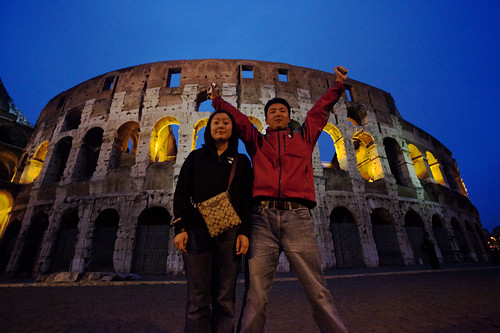


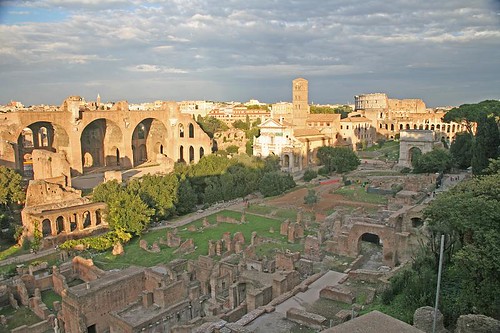
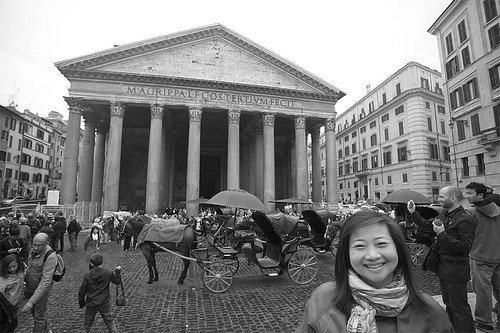
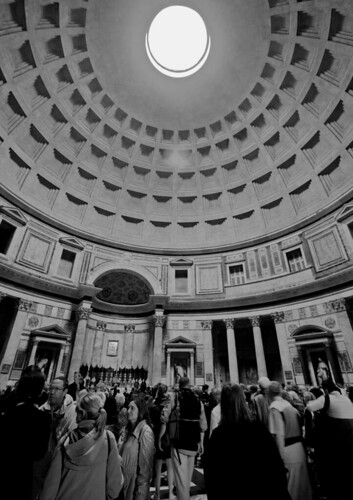
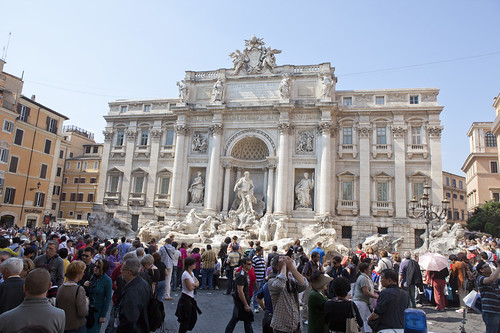
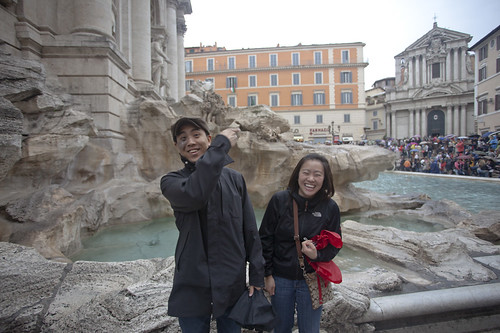

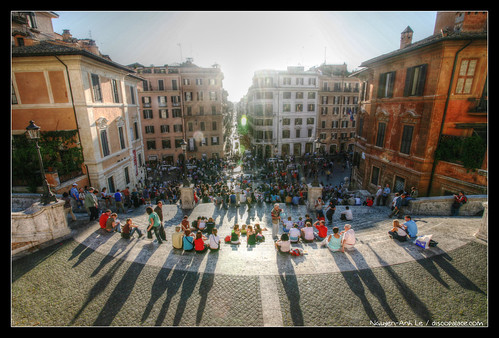
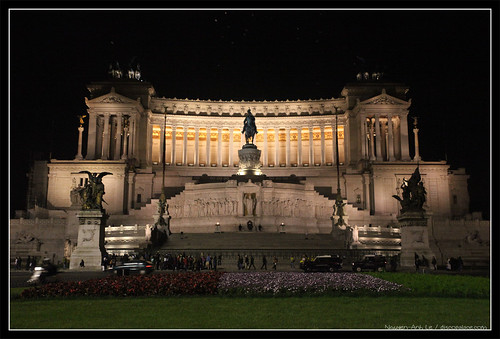
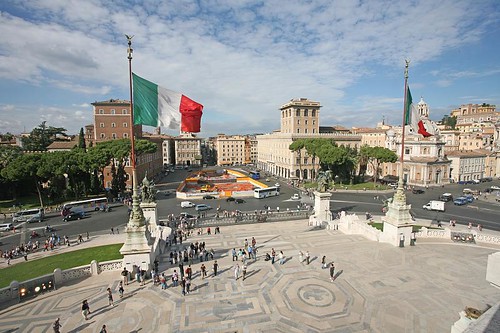
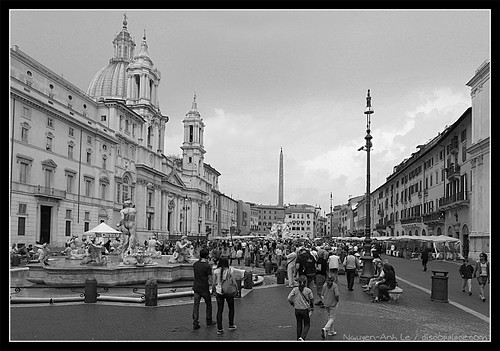


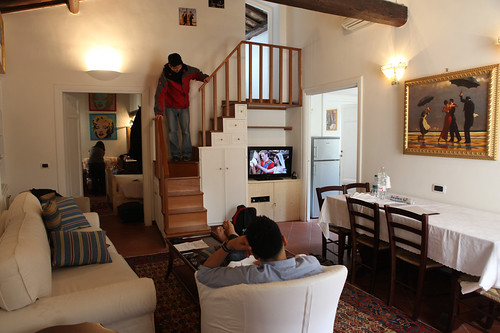
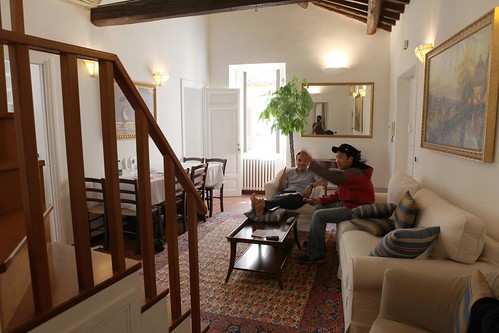
No comments:
Post a Comment